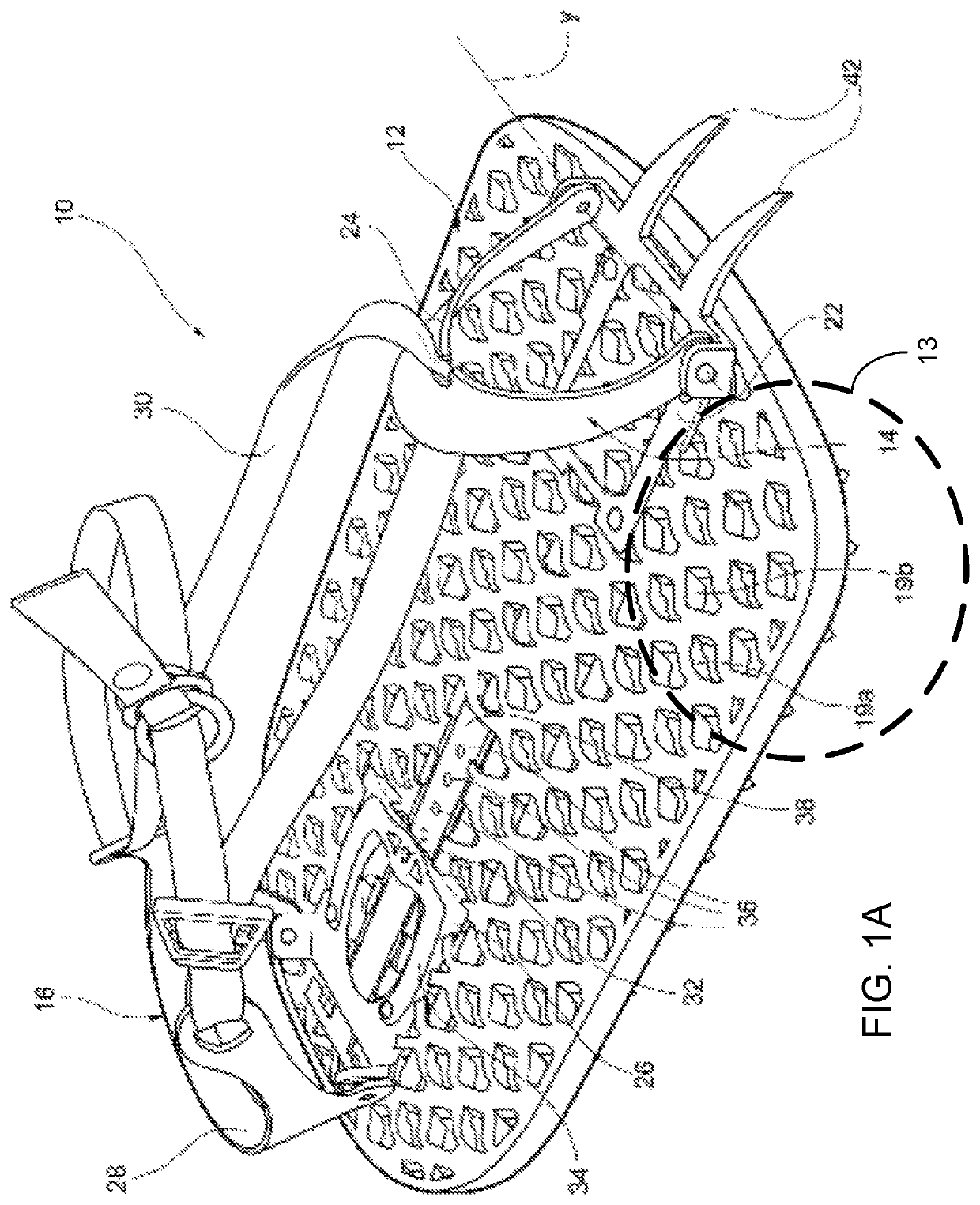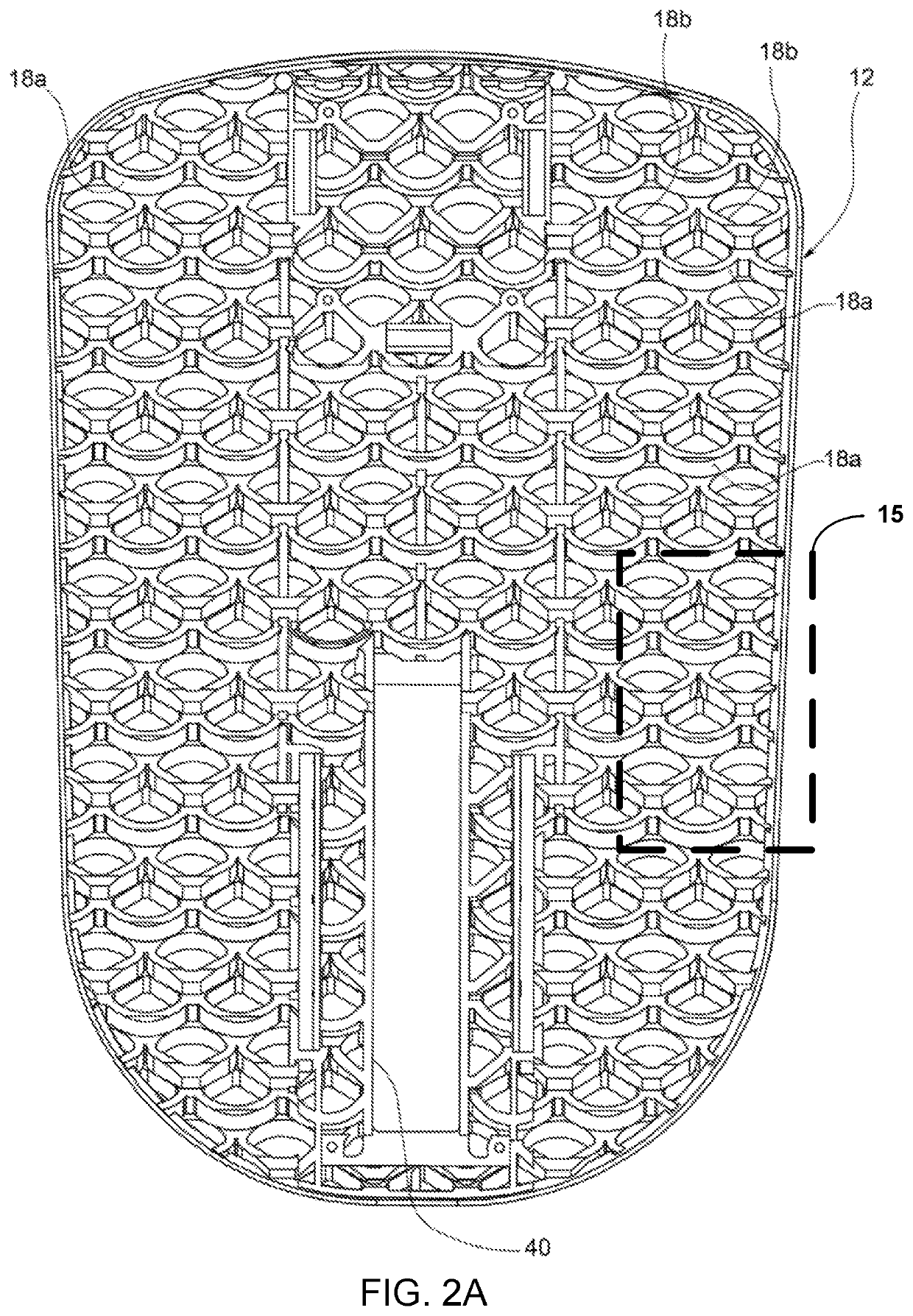Snowshoes
a technology of snowshoes and snowshoes, which is applied in the field of snowshoes, can solve the problems of not being suitable for snowy uneven ground, bulky, and not easy to transport, and achieve the effects of easy movement, good floatability in powder snow, and high grip
- Summary
- Abstract
- Description
- Claims
- Application Information
AI Technical Summary
Benefits of technology
Problems solved by technology
Method used
Image
Examples
Embodiment Construction
[0026]In the following description and claims, terms such as “front” and “rear”, “upper” and “lower”, “longitudinal” and “transverse”, “vertical” and “horizontal” etc. are to be intended as referring to the condition in which the snowshoe is used by the user and rests on the ground on the flat. In particular, the term “longitudinal” is used here to indicate a direction parallel to the walking direction, while the term “transverse” is used here to indicate a direction perpendicular to the walking direction.
[0027]With reference first to FIG. 1A, a snowshoe according to an embodiment of the present invention is generally indicated 10. The snowshoe 10 basically comprises a plate 12, a front binding device 14 attached to a front portion of the plate 12 and a rear binding device 16 attached to a rear portion of the plate 12. The plate 12 has an elongated shape extending along the longitudinal direction, in particular a generally rectangular shape with arched smaller sides (front and rear ...
PUM
 Login to View More
Login to View More Abstract
Description
Claims
Application Information
 Login to View More
Login to View More - R&D
- Intellectual Property
- Life Sciences
- Materials
- Tech Scout
- Unparalleled Data Quality
- Higher Quality Content
- 60% Fewer Hallucinations
Browse by: Latest US Patents, China's latest patents, Technical Efficacy Thesaurus, Application Domain, Technology Topic, Popular Technical Reports.
© 2025 PatSnap. All rights reserved.Legal|Privacy policy|Modern Slavery Act Transparency Statement|Sitemap|About US| Contact US: help@patsnap.com



